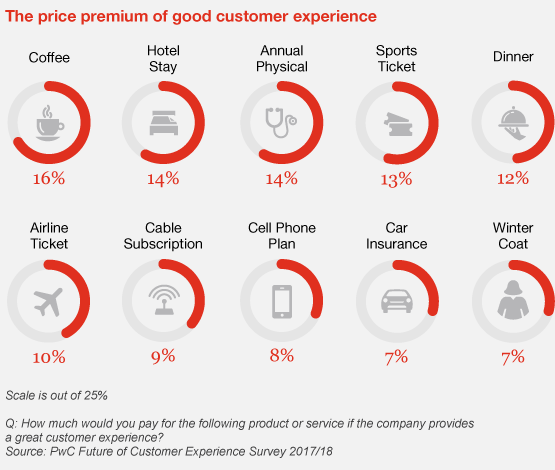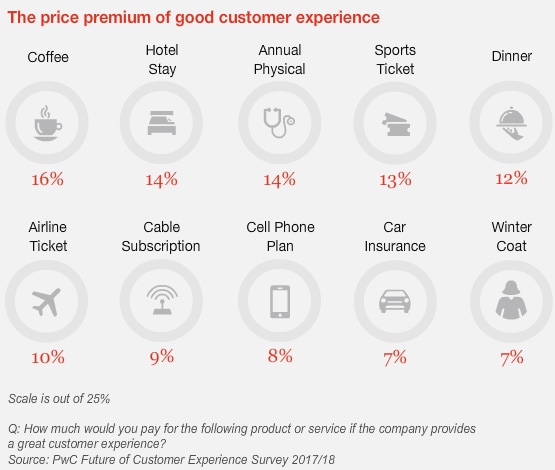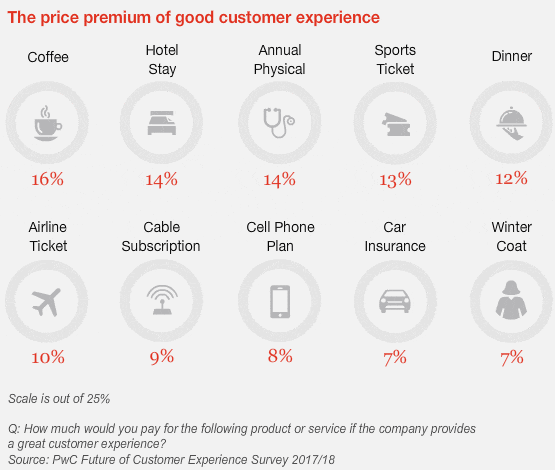Ingredients for great experiences
Give customers a great experience, and they’ll buy more, be more loyal and share their experience with friends. That’s what every company strives for. Yet so many consumers seem disappointed. Call it an experience disconnect: companies tout the latest technology or snappy design, but haven’t focused on—or invested in—the most meaningful aspects of customer experience.
What truly makes for a good experience? Speed. Convenience. Consistency. Friendliness. And human touch—that is, creating real connections by making technology feel more human and giving employees what they need to create better customer experiences.
Experience is everything. It's time to raise the bar.
Experience gap, meet opportunity sweet spot: 6 must-knows
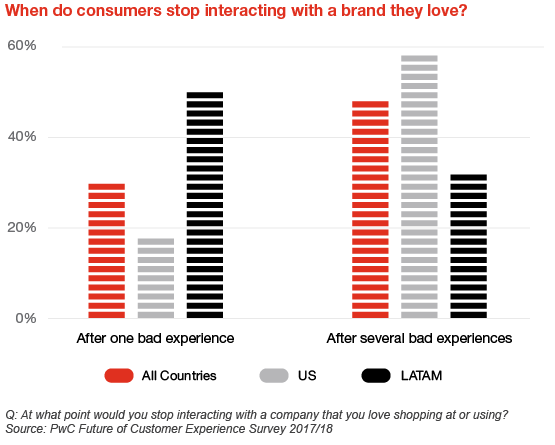
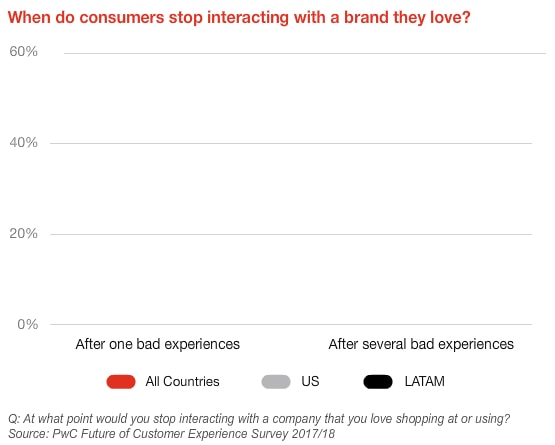
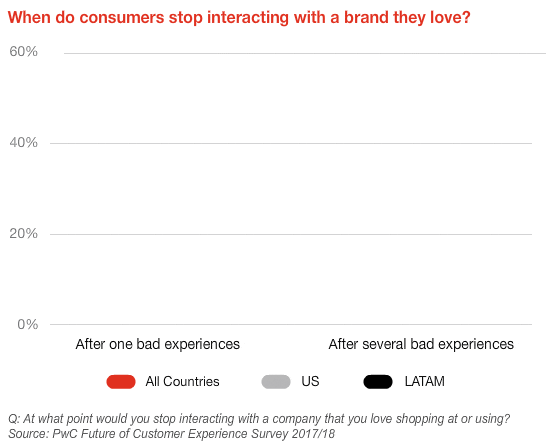
Bad experiences are driving customers away—faster than you think
If you think you’ll have plenty of time to get it right because you’re a beloved brand, think again. Imagine losing one-quarter of your customers in a single day. For good. Because that’s exactly what could happen after just one bad customer experience. In the U.S., even when people love a company or product, 59% will walk away after several bad experiences, 17% after just one bad experience.
32% of all customers would stop doing business with a brand they loved after one bad experience. In Latin America, 49% say they’d walk away from a brand after one bad experience.
Save the bells and whistles. Get the must-do’s right first (right now)
Nearly 80% of American consumers say that speed, convenience, knowledgeable help and friendly service are the most important elements of a positive customer experience. Prioritize technologies that provide these benefits rather than adopting new technologies for the sake of being cutting edge.
While many companies focus significant time and money on design that pops or cutting-edge technology to wow customers, these aren’t as essential to the experience equation as many companies believe. Customers expect technology to always work and often don’t take notice of it (unless it’s malfunctioning). They want the design of websites and mobile apps to be elegant and user-friendly; they want automation to ease experience. But these advances don’t matter much if speed, convenience and the right information are lacking.
When customers’ expectations are met or exceeded, companies gain measurable business benefits—including the chance to win more of their customers’ spending dollars.
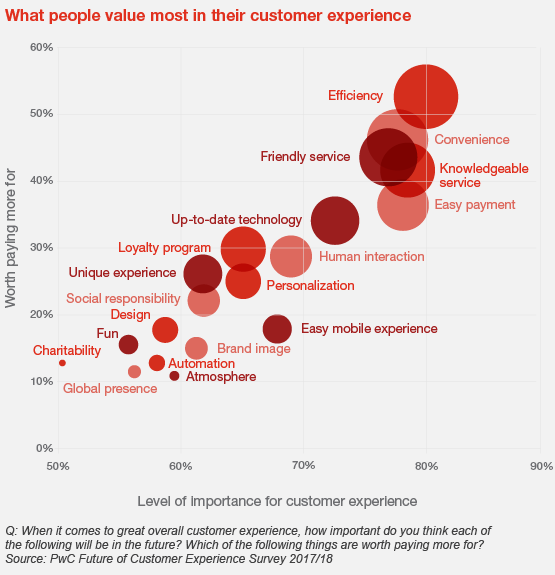
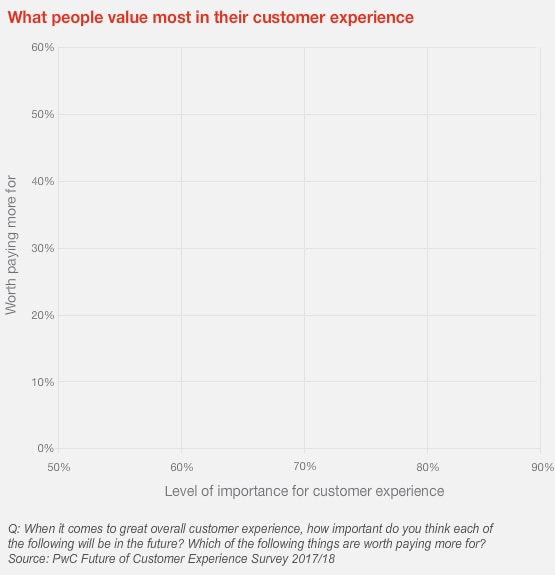
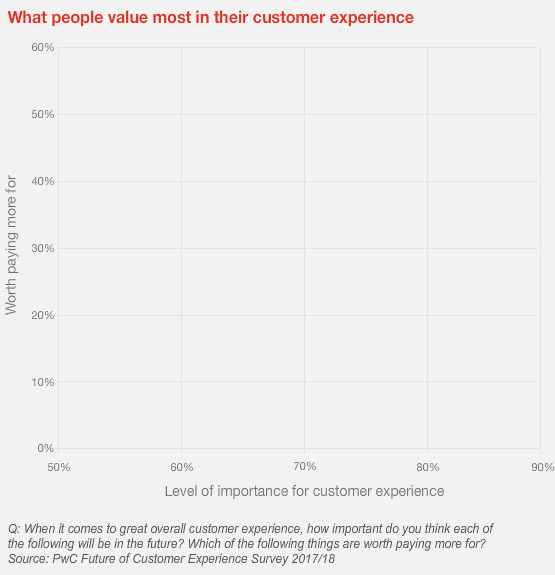
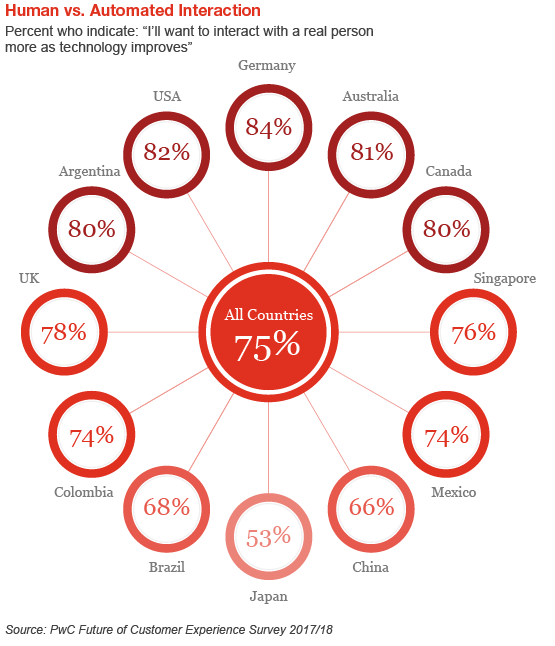
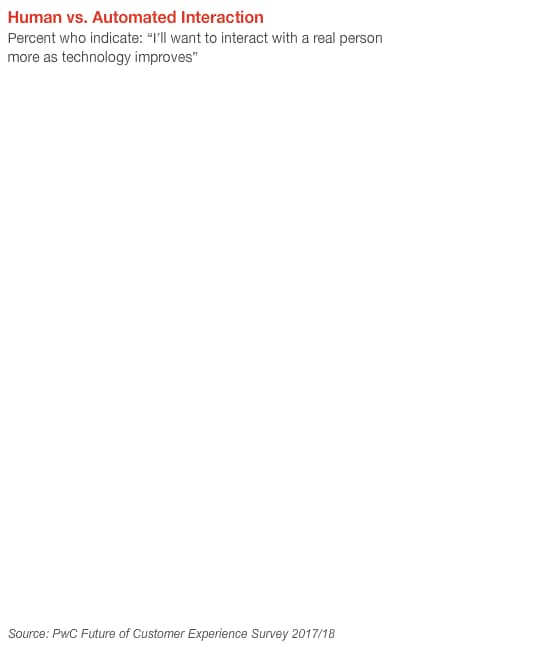
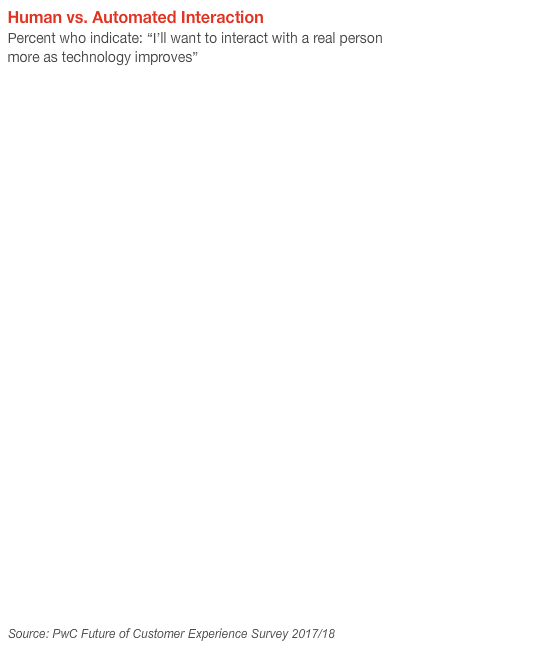
Excellent customer experience starts with superior employee experience
Human interaction matters now—and 82% of U.S. and 74% of non-U.S. consumers want more of it in the future. That makes it crucial that the technology supporting human interaction is unobtrusive and works seamlessly across platforms. Today, 59% of all consumers feel companies have lost touch with the human element of customer experience. And there’s a mismatch between customer expectations and how employees deliver: only 38% of U.S. consumers say the employees they interact with understand their needs; 46% of consumers outside the U.S. say the same.
Automated solutions should “learn” from human interactions so those experiences also improve. This shift allows your employees to be more engaged when they’re needed, provide better service and get necessary support from technology—as part of the seamless experience. This will require a change in how companies measure customer service performance. A focus on innovation, and equipping employees with technology and the information they need to best serve consumers could help close this gap. So could incentivizing employees to provide a good experience, boosting relevant training for employees and fostering a corporate culture of empowerment.
Gen Z isn’t all that different—but their definitions might be
What matters most to all generations surveyed holds true for Gen Z, too. But what passes for speed and knowledge to Gen Z might be different. Instant is expected. Convenience—the seamless transition from tablet to smartphone to desktop to human—is a baseline expectation.
Gen Z is impressionable right now, and is in the process of forming its loyalties to brands. 40% of Gen Zers (vs. 24% for everyone surveyed) feel more loyal to brands now than last year, so there are some nuances worth understanding if you’re trying to appeal to the preteens, teens and young adults that were born in the mid- to late- 1990s.
And just like other age groups, when Gen Z customers feel appreciated, they are more likely to recommend or endorse a brand on social media, subscribe to a brand’s newsletter or sign up for promotions and make repeat purchases.
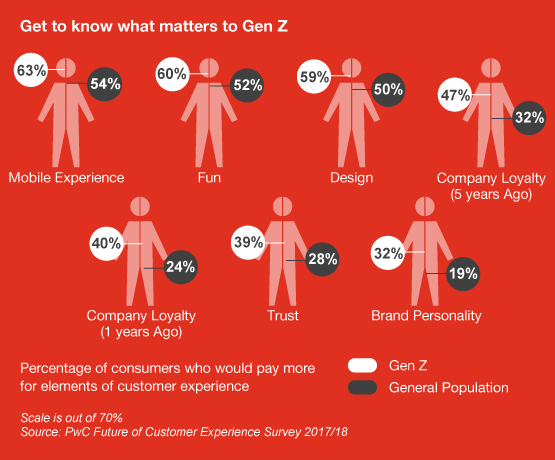
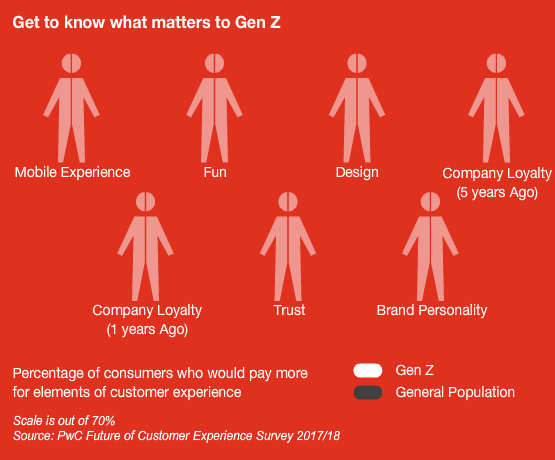
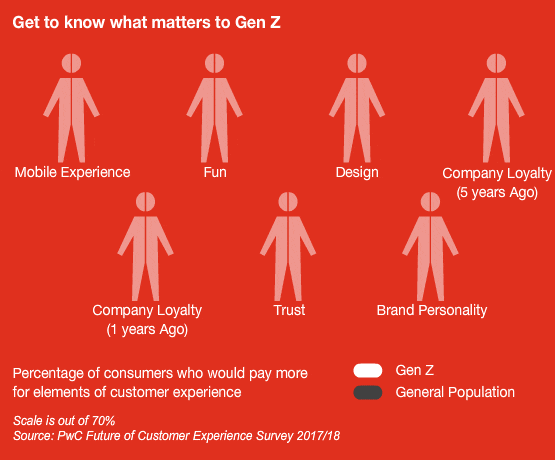
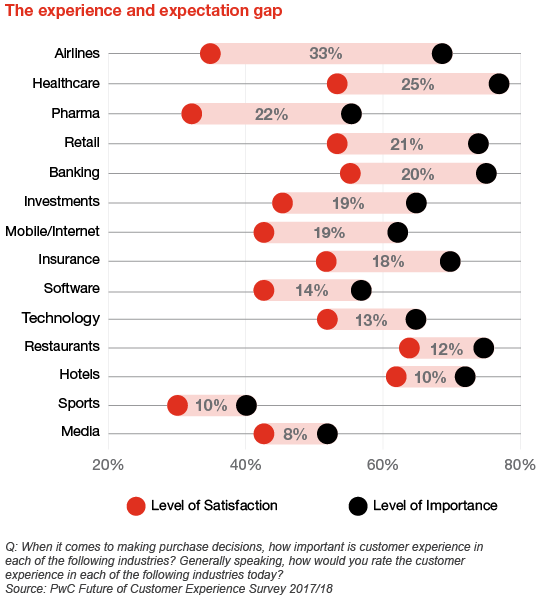
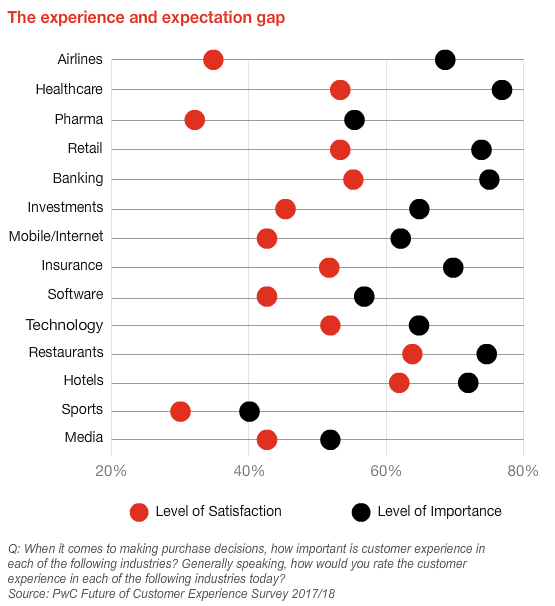
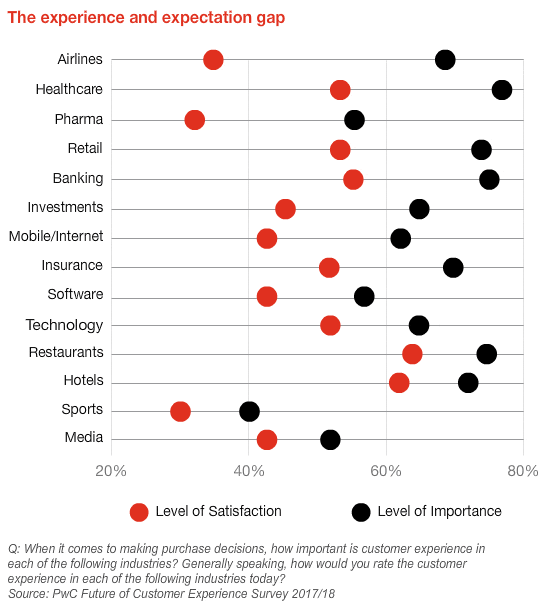
If experience isn’t your strategy, you’re doing it wrong
Among all customers, 73% point to experience as an important factor in their purchasing decisions, behind price and product quality. Customers are willing to pay more for the experience qualities that matter most to them: 43% of consumers would pay more for greater convenience, 42% would pay more for a friendly, welcoming experience and 65% of U.S. customers find a positive experience with a brand to be more influential than great advertising.
Yet the number of companies that say creating better customer experiences is a digital priority has dropped to just 10% in 2017, down from 25% in 2016, according to PwC’s Digital IQ survey. That’s a problem, especially since 54% of U.S. consumers say customer experience at most companies needs improvement. The expectations consumers have for different industries varies—but one thing is clear: they don’t feel their expectations are being met.
Know the implications
- Your customers have demands. They aren’t what you think. Technologies and improvements that increase speed, convenience, friendliness and knowledge—core demands of consumers—are openings for companies to improve how people interact with, embrace and spend with their brand.
- Customers generate revenue. Employees drive the experience. Reduce friction for consumers and empower employees to drive customer satisfaction. This requires new ways of working, a focus on employee experience and a sophisticated view of the human-and-machine relationships.
- Technology can’t solve experience problems. It’s only an enabler. Realign your priorities. Great employee experience leads to stronger, smarter, more innovative ideas. These will drive future business and superb customer experience.
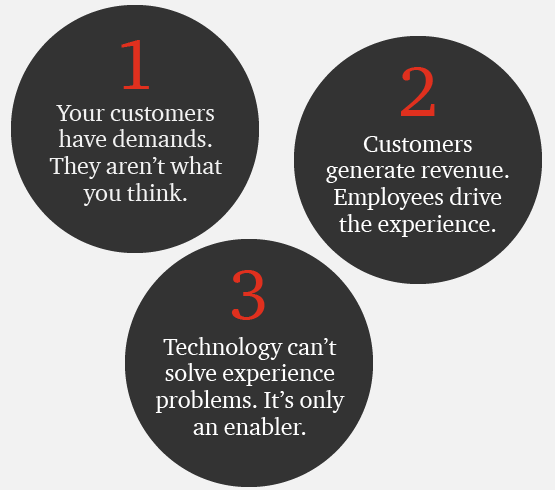
Contact us





